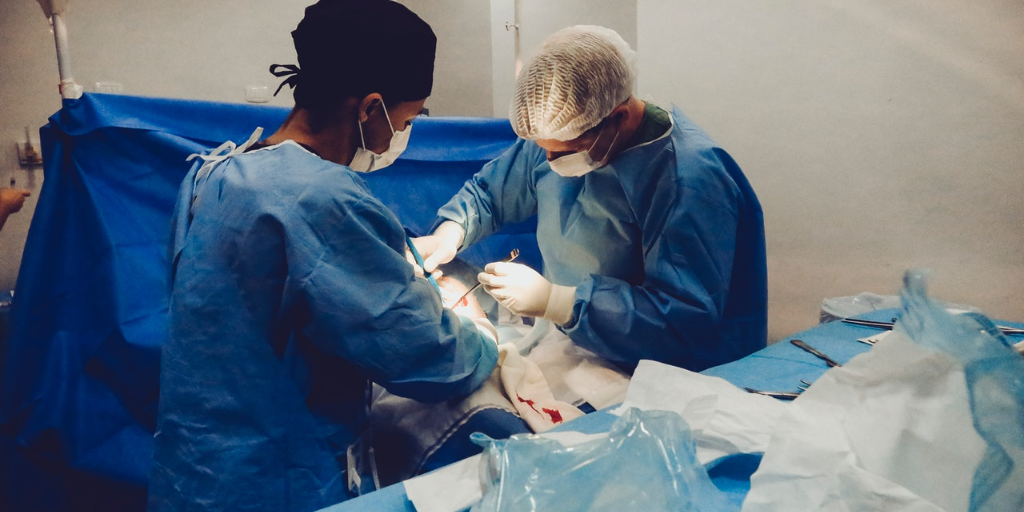A team of surgeons successfully transplanted a pig’s kidney into a human patient…with a caveat
Lesson summary
Hi there again, I’m Jeff and you are listening to Plain English, where we help you upgrade your English with current events and trending topics. This is lesson number 416. The producer, JR, has uploaded the full lesson to PlainEnglish.com/416.
A caveat is like a warning or a limitation. So, it is true that scientists transplanted a pig’s kidney to a human. But, as you’ll hear in today’s main lesson, there are several limitations to this groundbreaking procedure.
Today’s lesson also includes an expression; it’s the phrasal verb “hook up.” And we have a quote of the week, too. Let’s dive in.
Experimental pig kidney transplant
In an experimental procedure, a medical team at New York University completed the first successful transplantation of a pig’s kidney into a person. The patient was already brain dead, meaning that she had no hope of regaining consciousness. For an unrelated reason, the woman could not be an organ donor, but her family said that she wanted to be of use to medical progress. So, the family agreed to participate in the experiment.
Doctors said they had successfully hooked up the pig’s kidney to two of the patient’s blood vessels and monitored the patient’s progress. The organ stayed outside the patient’s body, but functioned successfully for 54 days, filtering waste from the blood and producing urine. The patient was kept alive on a ventilator the whole time.
This was an experimental case that is not yet authorized for use in live human patients. However, if transplants of this type can be perfected and approved for use in humans, it would be a major medical breakthrough.
In the U.S. alone, about 90,000 people are waiting for kidney transplants and only 17,000 are available each year, the majority from deceased donors. Kidney failure is often caused by diabetes, a side effect of obesity, which is becoming more common throughout the world. And so kidney failure can only be expected to increase as well.
Without a transplant, a patient with kidney failure must stay on dialysis, an invasive way to reproduce a kidney’s function. In the rich world, that is extremely expensive; in the poor world, it’s out of reach, and patients often die waiting for organs. Other patients are waiting for liver, heart, and lung transplants.
There’s a word for transplanting an animal’s organ into a human. That is “xenotransplantation” and it has been a dream of scientists for hundreds of years. As early as the 17th century, humans have attempted to use animal parts to replace parts of failing human bodies. In 1984, an American infant born with a deadly heart syndrome received the heart of a baboon. The baby lived for 21 days, far longer than expected. However, many people raised concerns about the ethics of using a primate for its organs.
Scientists, however, thought pigs would be better candidates for xenotransplantation. Pigs are already raised for food production, so there would be fewer ethical concerns about harvesting organs from them. Why choose pigs, though? Their organs perform similar functions as those of humans, and they are the correct size. A kidney from a cow would be too big, but one from a goat would be too small.
What’s more , pigs have long been used for smaller medical procedures. Pig heart valves have been used in humans for many years. Skin grafts from pigs have been used to treat severe burns in humans. And a popular blood thinner is made from pig intestines.
But there is one problem… the organs from a pig produce an enzyme that the human body would interpret as foreign. Transplant the kidney from an ordinary pig into a human, and the human patient will reject the kidney, meaning that it would not work. However, this was no ordinary pig. The pig used in the transplant was genetically modified so that it would not produce this enzyme.
Researchers say that experimental transplants of pig organs may happen in live human patients within the next few years. In the longer term, scientists hope to be able to harvest animal organs without having to raise an animal itself.
A big need
Every person is born with two kidneys, but most of us only need one to function for our whole lives. Most live donors give a kidney to someone they know, but not every donor is a match for the patient. It’s also not easy to donate a kidney. There is a risk to any surgery, and most living donors need a few weeks to recover.
Some countries have laws that say every person consents to be an organ donor at death unless they opt out of it. It’s called “presumed consent.” Spain, Croatia, England, France, and the Netherlands have these laws, and all have some of the world’s highest rates of kidney transplants. The Netherlands has the highest rate of living-donor kidney transplantation in the world. Their government offers donors three months of paid leave from work to recover from surgery.
Learn English the way it’s really spoken

